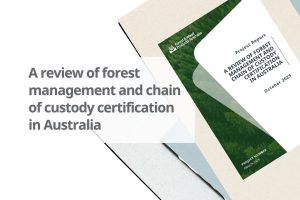The molecules of plant fibers are being transformed into a light-weight material five times stronger than steel. Cellulose nanofiber has the potential to be used to make everything from auto parts to electronic displays.
While development is in the early stages, the Japanese Government estimates domestic sales may be worth about 1 trillion yen (AU$11.1 billion) in 15 years. A $2 pen from the Mitsubishi Pencil Company is the first commercial product already out.
Hurdles remain for cellulose nanofiber, which still costs more than conventional materials and faces competition from other new technologies, like Canada’s nanocrystalline cellulose.
“At issue is whether the material will overcome the hurdles of costs,” said Hiroyuki Yano, a professor at the laboratory of active bio-based materials at Kyoto University who has been studying the development of cellulose nanofiber since 1998. “Japan has plentiful forest resources and also has industry trying to utilise them. Japan could become a resource-supply nation.”
Click here for source (Bloomberg)
Photo: Kyoto University



